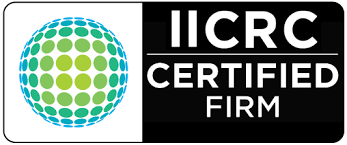Sump Pump Failure in Your Finished Basement? Here’s Your Ultimate Dry Out and Rebuild Plan
A sump pump failure in a finished basement can turn your sanctuary into a nightmare overnight. The sudden influx of water can leave your basement wet, damp, and teeming with moisture, threatening your belongings and the structural integrity of your home. Whether it’s a leaking toilet, a burst pipe, or heavy rainfall, understanding how to effectively dry out and rebuild after a sump pump failure is crucial for a clean and sanitized living space. Here’s a comprehensive dry out and rebuild plan to help you navigate this challenging situation.

1. Immediate Response: Stop the Water Flow
The first step in addressing a sump pump failure is to halt the source of water intrusion. If the failure is due to a burst pipe or a leaking toilet, shut off the main water supply to prevent further water damage. Identify and fix any immediate issues to stop additional moisture from seeping into your basement. Ensuring the water flow is controlled is vital to minimize the extent of the damage.
2. Assess the Damage: Fire Damage Assessment Equivalent
Once the water flow is stopped, conduct a thorough assessment of the affected areas. Check for visible signs of wetness around sinks, toilets, and bathroom fixtures. Look for damp walls, floors, and ceilings that may have absorbed water. Identifying all areas affected by moisture and humidity is essential for an effective dry out process.
3. Remove Standing Water: Water Extraction
Begin by removing any standing water from the basement. Use wet vacuums, pumps, and buckets to extract as much water as possible. The quicker you remove the water, the less chance there is for long-term damage and mold growth. Focus on areas around the toilet, bathroom, and sink where water accumulation is most likely.
4. Drying Out: Controlling Moisture and Humidity
After removing the standing water, the next step is to thoroughly dry out the basement. Utilize industrial-grade fans and dehumidifiers to reduce moisture levels and control humidity. Proper ventilation is crucial to ensure that all damp areas are dried completely. Pay special attention to hidden spots behind walls, under flooring, and around plumbing fixtures to prevent mold from taking hold.
5. Mold Prevention: Clean and Sanitized Environment
Excess moisture creates an ideal environment for mold growth. To prevent this, clean and sanitize all affected areas immediately. Use mold-inhibiting cleaners on surfaces that have been exposed to water. Regularly monitor humidity levels to ensure they remain within a safe range, typically between 30-50%. Maintaining a clean and sanitized environment is key to safeguarding your health and preserving the integrity of your basement.
6. Repair and Rebuild: Restoring Your Space
Once the basement is dry and sanitized, begin the repair and rebuild process. Replace any damaged drywall, flooring, or insulation that has been compromised by water exposure. Ensure that all plumbing fixtures, such as toilets and sinks, are properly repaired and sealed to prevent future leaks. Repaint walls and ceilings to restore the basement’s appearance, making it feel fresh and revitalized.
7. Install Backup Systems: Prevent Future Failures
To avoid future sump pump failures, consider installing backup systems such as battery-powered sump pumps or water alarms that alert you to rising water levels. Regular maintenance of your sump pump and drainage systems can also help prevent unexpected failures. By taking proactive measures, you can protect your finished basement from future water damage and maintain a dry, clean, and sanitized environment.
Conclusion
A sump pump failure in a finished basement can cause significant water damage, but with a strategic dry out and rebuild plan, you can restore your space efficiently. By acting swiftly to stop the water flow, thoroughly drying out the area, preventing mold growth, and undertaking comprehensive repairs, you can ensure your basement remains a safe and enjoyable part of your home. Prioritize a clean and sanitized environment to protect your health and preserve the beauty of your living space. Don’t let moisture and humidity take control—follow this plan to reclaim your basement and keep it dry for the future.
















